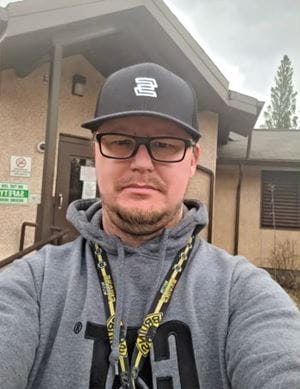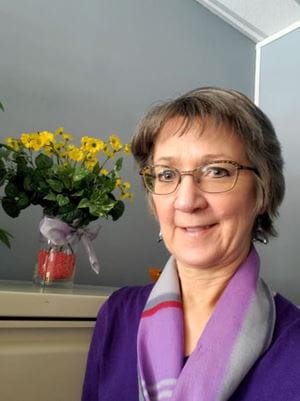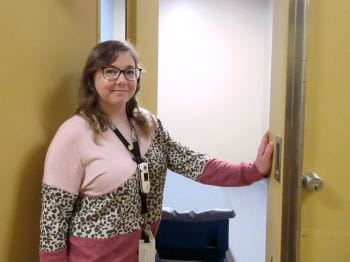Every day, correctional service workers strive to be agents for change. They help to lay the groundwork for individual rehabilitation – showing people they can change their lives if they try.
There are approximately 2,400 provincial correctional officers, facility youth workers, health care workers, program facilitators, probation officers and community youth workers across Saskatchewan. We are sharing a few of their stories to mark Correctional Services Appreciation Day on May 9.
Guiding Hope in Youth Custody
As a facility youth worker and case manager at Prince Albert Youth Centre, Brett Weed often sees youth who seem hopeless when they first come into custody. He can sense they are open to change, but it takes a lot of work to show them how.
“I think if we give them the opportunity for change and help guide them through, it seems to help,” Brett said. “Seeing the hopelessness leave them and giving them hope is the best aspect (of this job).”

Brett says talking openly and sharing his own life experiences can help gain their trust to show them anyone can overcome hardships.
Brett shared the story of one youth he met who had written himself off and given up.
“Every day I would talk to him and tell my story and just kind of share other stories of other people who have overcome hardships in their life. This young man had his parents pass away, he basically had no one left,” Brett said. “We kind of guided him through mental illness and depression. He was (in custody) for quite a while and finally at the end, with a lot of hard work from basically all the staff – (we) kind of got him on the right track.”
When he was ready to leave custody, staff helped the youth find a place to live and register in school, and he has not returned. For Brett, success stories like this youth make everything worthwhile.
“When I first got in, I didn’t realize how much you could help the youth here,” Brett commented. “There are a lot of resources we can use and a lot of things we do have at our disposal that can help these youth and I’ve seen it firsthand. All you have to do is try.”
Practising Change in Community Corrections

Margot Bartel started working in community corrections in 2011, and now she is a team lead who supports probation officers and community youth workers. After working in child protection for many years, Margot saw an opportunity to be an agent for change in community corrections.
“Before I ever started working in human services, (I) always thought that if people went for counselling or attended programs, that there should be a magic bullet and people would automatically change,” Margot said.
The reality of rehabilitation is more complex, and she knows change is only possible when someone is ready to commit.
“You can give them the information and give them all the tools, but it’s not until (someone) is actually ready to make the change that things start to occur,” Margot said.
“Prior to that you see yourself as somebody who’s paving the way and planting seeds for change and hopefully at some point, they will be ready. Before that we call it practicing for change.”
Changing the Game in Mental Health Corrections
“I didn't know a lot about corrections in the beginning, but I knew that this was the path that I wanted to take,” said Melissa Pateman, who recalls being drawn to a career in corrections at the age of 21.
Now she works as a mental health corrections officer at the Saskatchewan Hospital North Battleford (SHNB), where offenders are assessed by a psychiatrist and treated as patients, not inmates.
Melissa says it is an amazing opportunity to have an entire team of psychiatrists, nurses, nurse practitioners and psychiatric nurses working alongside addictions counsellors, social workers, teachers, therapists and cultural coordinators to stabilize and treat people with mental illness and addictions.

“I find it very interesting when we have patients come in; you never know what to expect. There are so many factors to take into consideration when mental illness plays a part in their crime,” Melissa explained.
“The patients do not present as someone who may have committed a horrible crime; they're just people in need of support.”
She often sees a complete transformation in behaviour within weeks of a patient starting treatment. The impact that proper medication can have on changing lives of people with severe mental illnesses is a game changer.
Melissa spoke about one woman who never realized that hearing voices in her head was not normal.
“I remember her saying this was the first time that she didn’t have somebody talking to her and she could finally just live her life and she didn’t know that was not normal,” Melissa said. “When we see people (and) we can actually change their lives with medication, it’s great.”
The patients attend therapy and educational programming from 9 a.m. to 4 p.m. In the supportive setting of SHNB, many succeed in completing their grade 12 adult education certificates and even go on to start post-secondary classes or trade tickets. Witnessing the patients succeed is Melissa’s favourite part of the work she does.
Paving the Way to Improve Lives
For Brett, Margot and Melissa, the motivation for careers in corrections comes from being able to help people change their lives. They know it is not a career path that is obvious for many people. There is no question that working in unpredictable environments can be stressful and challenging. It requires dedication, determination, physical and mental fitness, and above all, the ability to show compassion, empathy and understand the many different social factors that can affect criminal behaviours.
They each describe how they found a strong, supportive community in their coworkers who have their backs on shift and beyond.
“Being a correctional officer is tough at times, but the rewards you get daily by little improvements, changes and working with the patients, makes it all worthwhile,” Melissa said.
